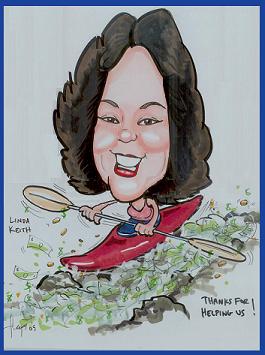Do these sensations feel familiar?
- Upside down.
- Under water.
- In the dark.
- Can’t see clearly.
- Running out of air.
Many banks, many lenders, many businesses, and many business owners have felt that way at least once in the last two years. Some of you…once a month!
In kayaking we call that a capsize.
We plan for it. We train for it. We have the equipment to recover from a capsize. We assign roles in rough water. We dress for the water temperature, not the air temperature. We can rescue ourselves if need be. We paddle with others to improve our chance of survival and success.
You likely know me for consulting financial institutions on guidelines
and intensive, hands-on training for lenders in tax return and
financial statement analysis. Did you know I also speak at conferences?
Plan to Capsize! Seven Steps to Survival and Success
This speech for banking and business associations is a funny look at a serious subject. I take the lessons from my kayaking experience and interpret them to improve your survival and success in banking or in business.
Do you belong to a banking or business association with state or national meetings?
Let me help make your next conference even more relevant and even more interesting.
- Call and ask why the Certified Speaking Professional designation I hold reduces the risk of hiring me as a speaker
- Contact your association and recommend this topic
- Oh, and don’t forget to recommend me to present it! ‘-)
What other steps do you think are crucial to survival and success?

 A professional association gave me the caricature above as a thank you. And yes, those are dollar bills in the water!
A professional association gave me the caricature above as a thank you. And yes, those are dollar bills in the water!